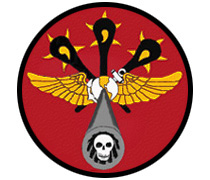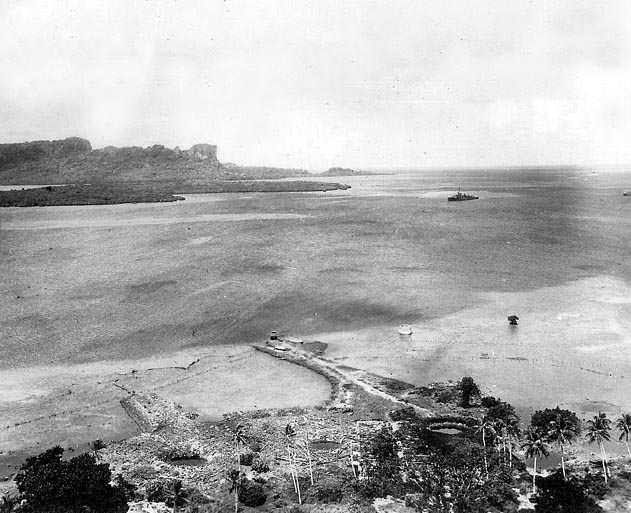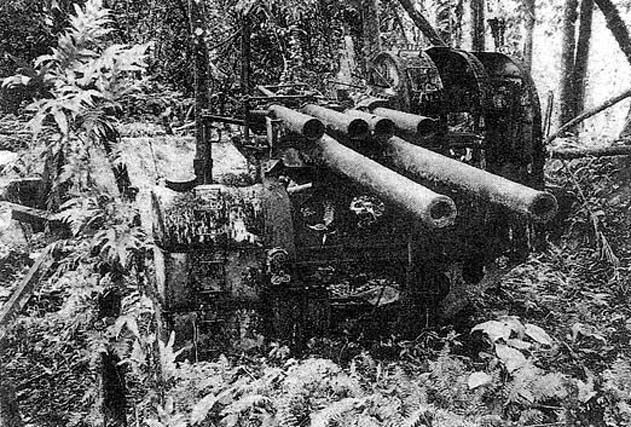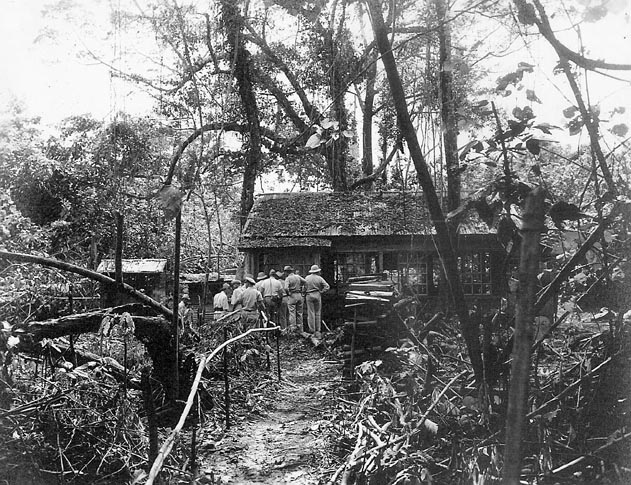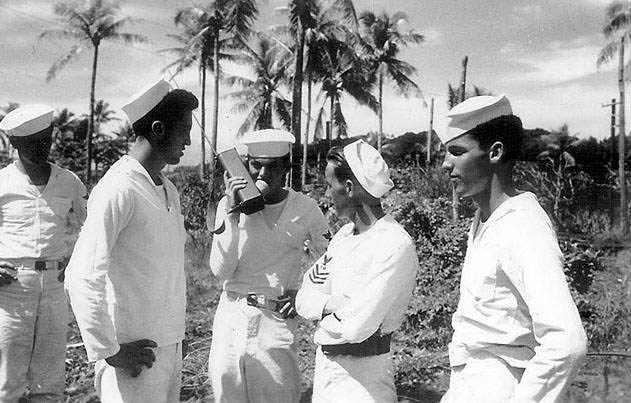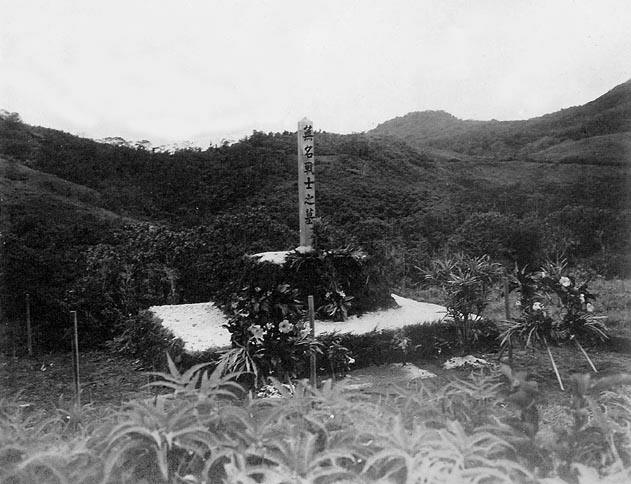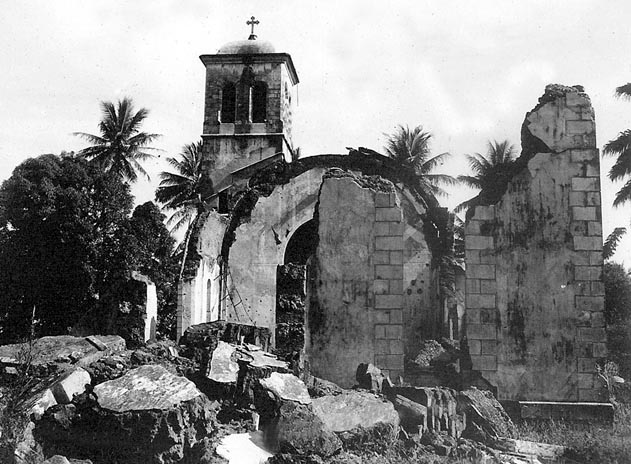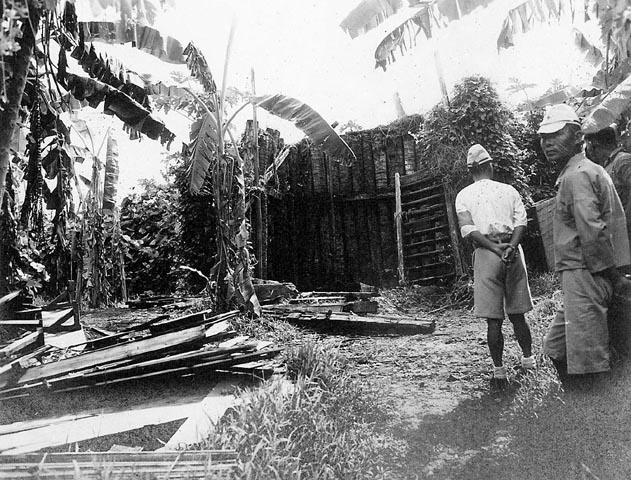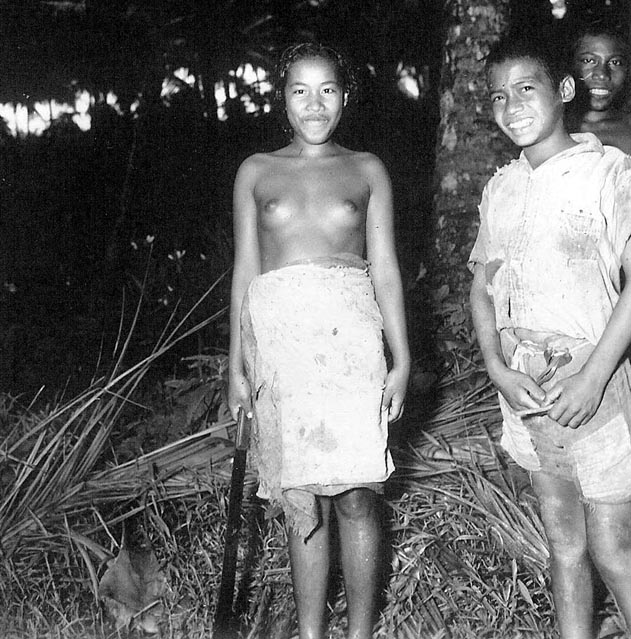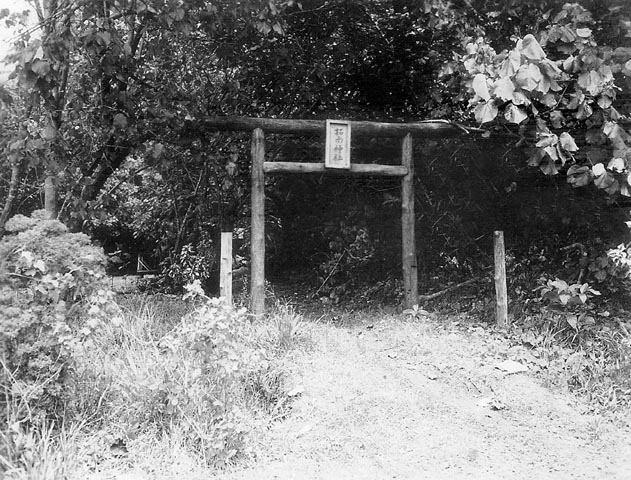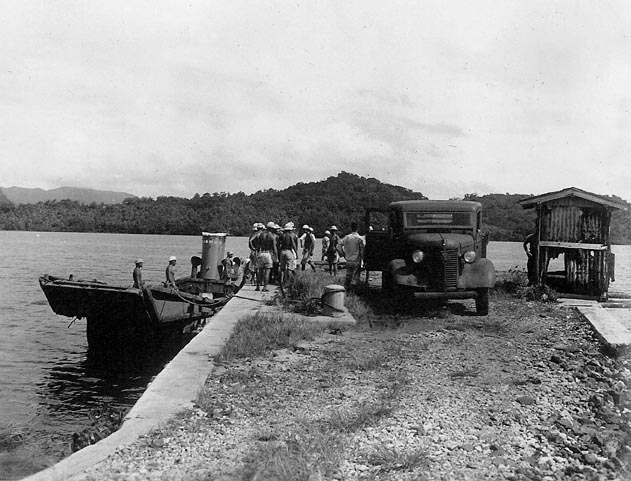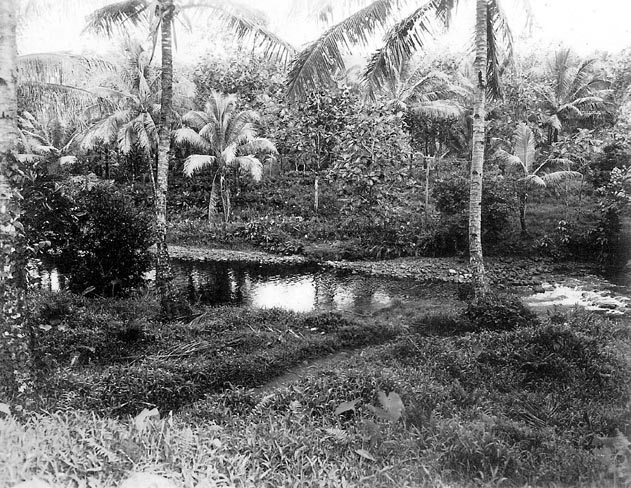|
|
||
|
|
||
|
|
SEPTEMBER 1945: PAGE 2
PONAPE HARBOR: Seen from Kolonia is Ponape's main harbor. In the background, Sokehs Rock rises over 600 feet above the sea. Photograph: U.S. Marine Corps, Arthur H. Navarre Collection (Courtesy of Diane Hindy)
JAPANESE DEFENSES: Located on Sokehs Rock, this Japanese 127mm dual-purpose gun overlooked the main harbor town of Kolonia. Photograph: U.S. Marine Corps, Arthur H. Navarre Collection (Courtesy of Bill Kehr)
TOURING PONAPE: A group of American officers is escorted by the Japanese to various facilities on Ponape. Photograph: U.S. Marine Corps, Arthur H. Navarre Collection (Courtesy of Diane Hindy)
RADIO COMMUNICATIONS: Sailors from the USS Hyman and USS Farquhar maintain continual radio contact with other groups inspecting the island. Photograph: U.S. Marine Corps, Arthur H. Navarre Collection (Courtesy of Diane Hindy)
GRAVE OF BILL LOVE AND HIS CREW: Following the end of hostilities, the Japanese on Ponape erected this monument over the grave of the crew of MB-6 to impress the Americans. Japanese characters on the monument explain that it is the "Grave of American Airmen." Photograph: U.S. Marine Corps, Arthur H. Navarre Collection (Courtesy of Diane Hindy)
GERMAN CHURCH: This old German church on Ponape was bombed by American aircraft after it was discovered that the Japanese were using the building for military purposes. Photograph: U.S. Marine Corps, Arthur H. Navarre Collection (Courtesy of Diane Hindy)
JAPANESE FACILITY: Japanese sailors show the Americans the various facilities they had constructed on Ponape. Although the exact purpose of this structure is not known, it appears to well-constructed with coconut tree logs. Photograph: U.S. Marine Corps, Arthur H. Navarre Collection (Courtesy of Diane Hindy)
NATIVE CHILDREN: Native children of Ponape greet VMB-613 members with smiles and curiosity. Photograph: U.S. Marine Corps, Arthur H. Navarre Collection (Courtesy of Diane Hindy)
JAPANESE GATE: This traditional Japanese gate, known as a "Torii" was located on Ponape. Gates such as these normally mark the entrance to a Shinto shrine. Photograph: U.S. Marine Corps, Arthur H. Navarre Collection (Courtesy of Diane Hindy)
JAPANESE WORKING PARTY: Under the watchful eye of an American serviceman, a group of Japanese sailors prepares to board a landing barge. Photograph: U.S. Marine Corps, Arthur H. Navarre Collection (Courtesy of Diane Hindy)
ISLAND PARADISE: Being a fairly large island, Ponape was covered with lush vegetation. Unlike the coral atolls of the Marshall Islands, fresh water and growing food to support the garrison was not a problem for the Japanese. As a result, no one on Ponape starved to death, despite the fact that the island was unable to receive supplies from Japan. Photograph: U.S. Marine Corps, Arthur H. Navarre Collection (Courtesy of Diane Hindy) |
|
|
Copyright © 2008 Marine Bombing Squadron Six-Thirteen Association. All Rights Reserved. |
||
